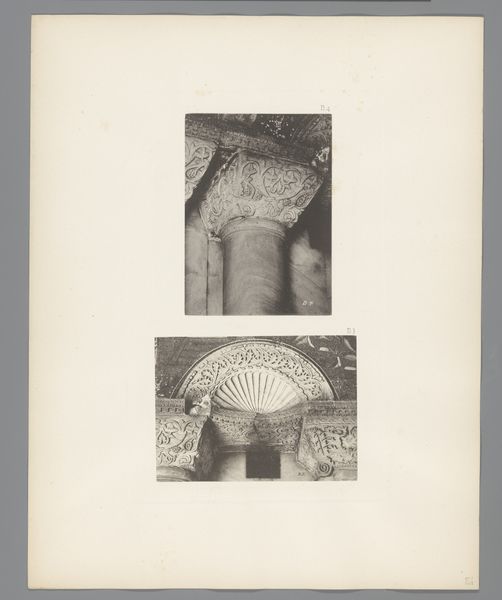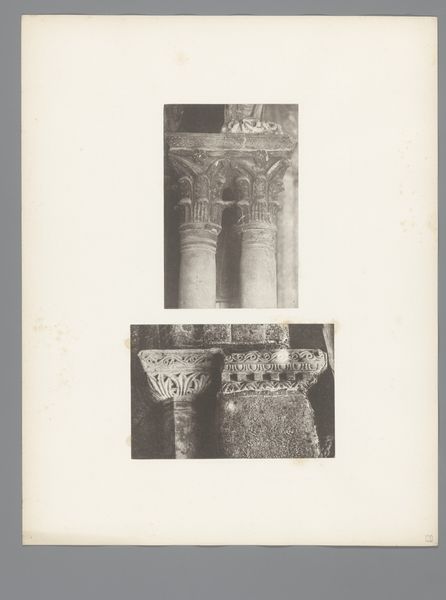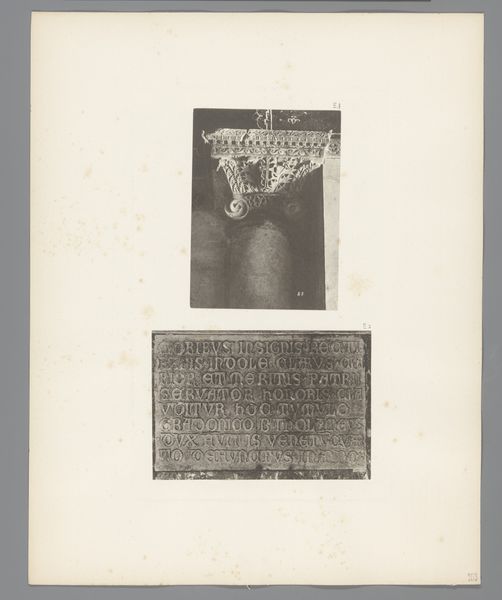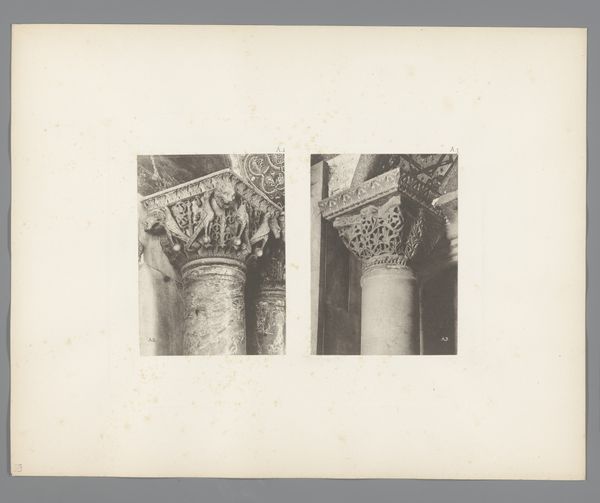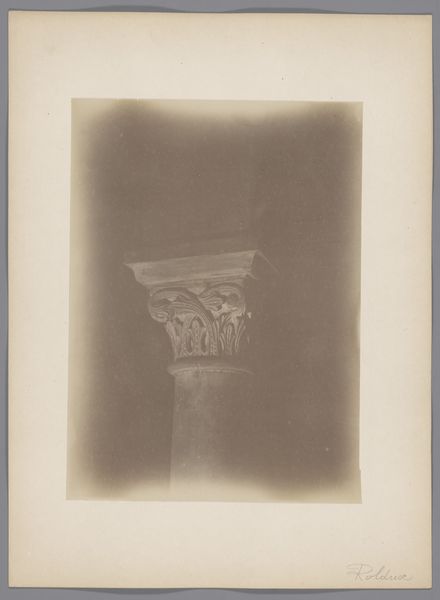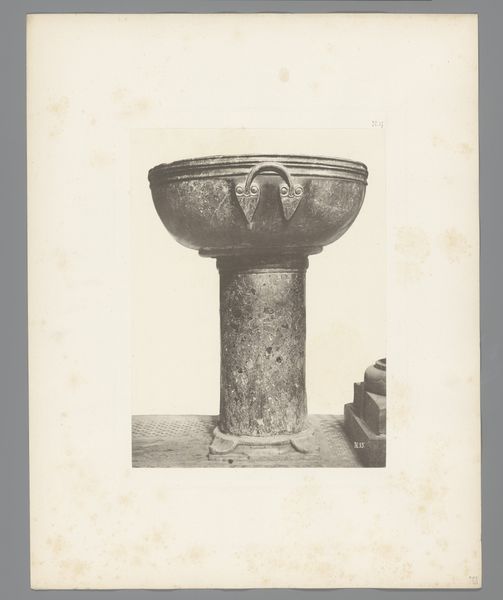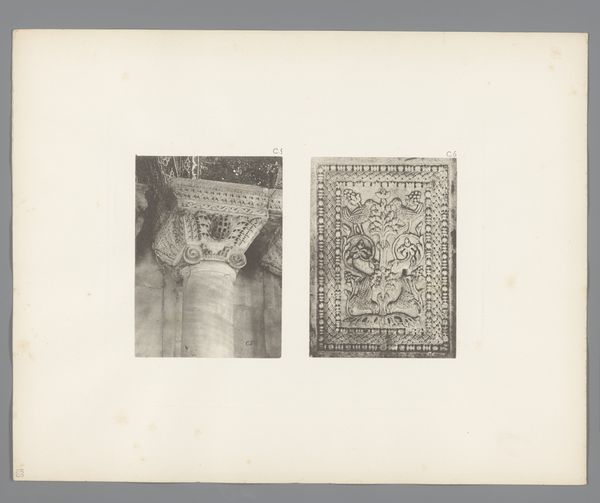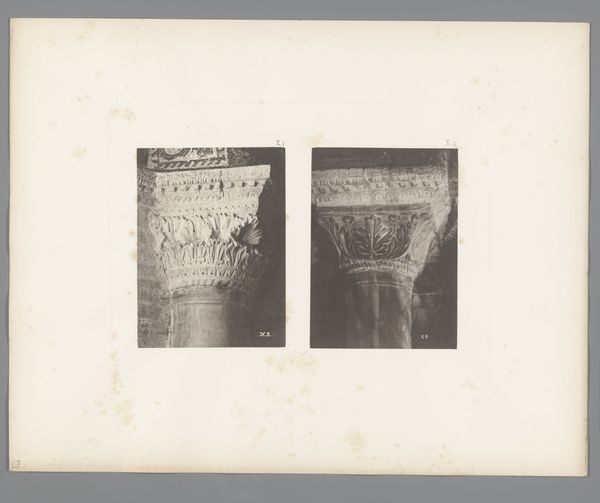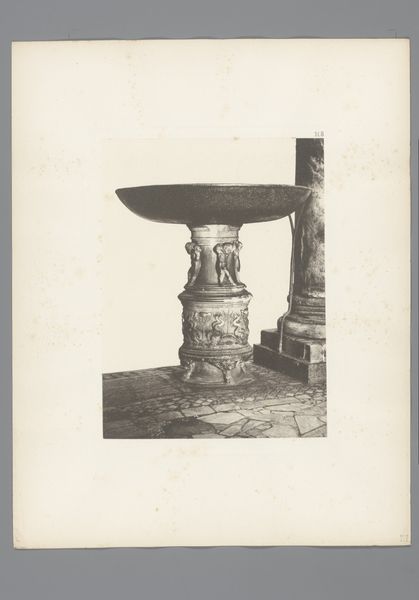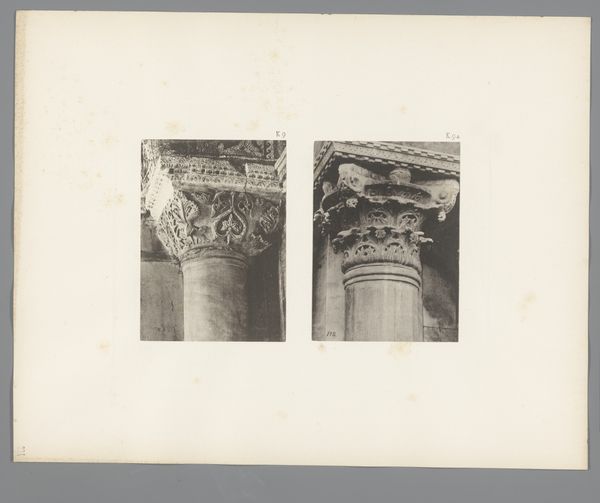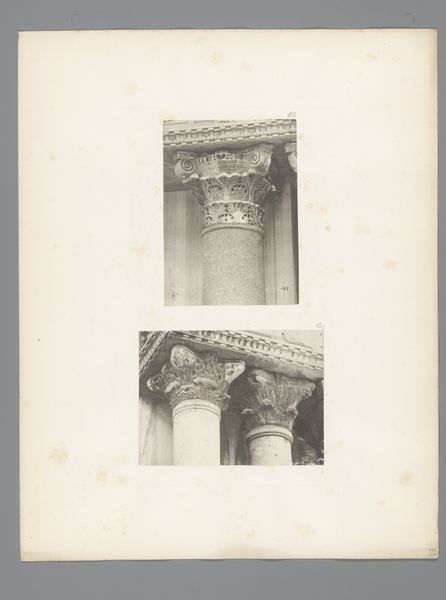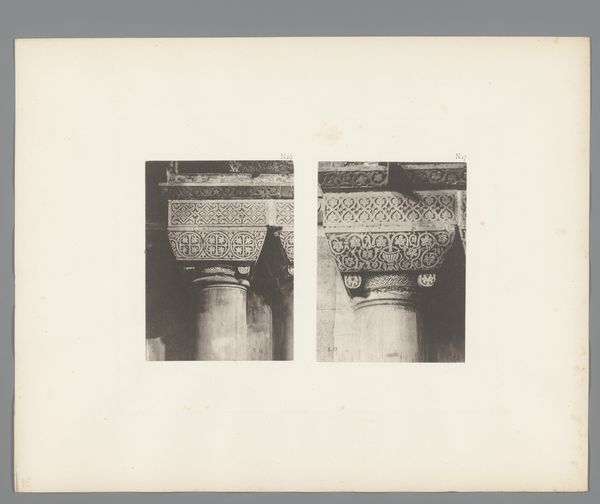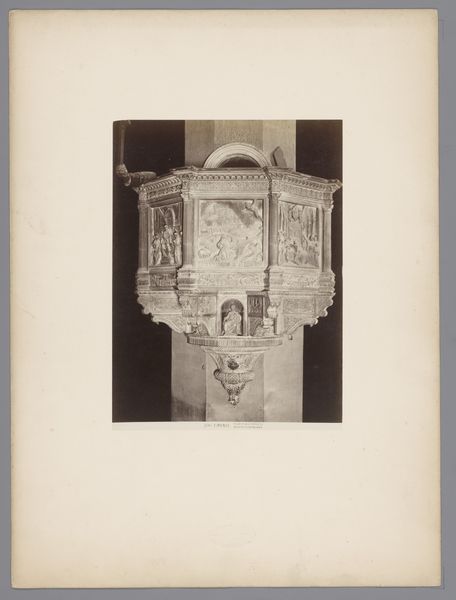
Twee afbeeldingen van kapitelen en details van de San Marco in Venetië before 1885
0:00
0:00
Dimensions: height 392 mm, width 310 mm
Copyright: Rijks Museum: Open Domain
Curator: Let’s explore this photographic print from before 1885 by Carl Heinrich Jacobi: "Twee afbeeldingen van kapitelen en details van de San Marco in Venetië.” Editor: The details in these close-up shots of the capitals in Venice's San Marco are pretty intricate. I’m initially drawn to the juxtaposition of the almost clinical, photographic style with the ornate, historical details of the architecture. How do you interpret this work in relation to its time? Curator: The very act of photographing architectural details like this during that period has profound implications. It's about more than documentation. Consider how Venice, as a historical crossroads, was being re-imagined and, in some ways, commodified for the rising tourist industry. The photograph attempts to freeze and preserve aspects of Venetian identity as the city changes due to modernization and colonialism. To what extent does this type of selective framing also shape narratives of power, tradition and exclusion? Editor: That's fascinating. I hadn't considered the power dynamics at play. I was focusing more on the aesthetic contrast, but what you’re saying situates the piece in a larger sociopolitical context. Does Jacobi's choice of focus contribute to a kind of curated historical narrative? Curator: Precisely! Jacobi's photographs weren’t created in a vacuum. They intersect with broader currents concerning cultural preservation, identity construction, and the marketing of "authentic" historical experiences, then and now. They become a lens through which certain stories are amplified, while others are suppressed. Editor: That really shifts how I see this. It's not just about appreciating the architectural detail, but about questioning who gets to define and present that history. Thank you for shedding light on the sociopolitical context. Curator: Absolutely! Always consider the lens through which we view history and whose story it serves.
Comments
No comments
Be the first to comment and join the conversation on the ultimate creative platform.
